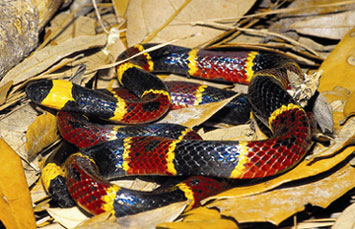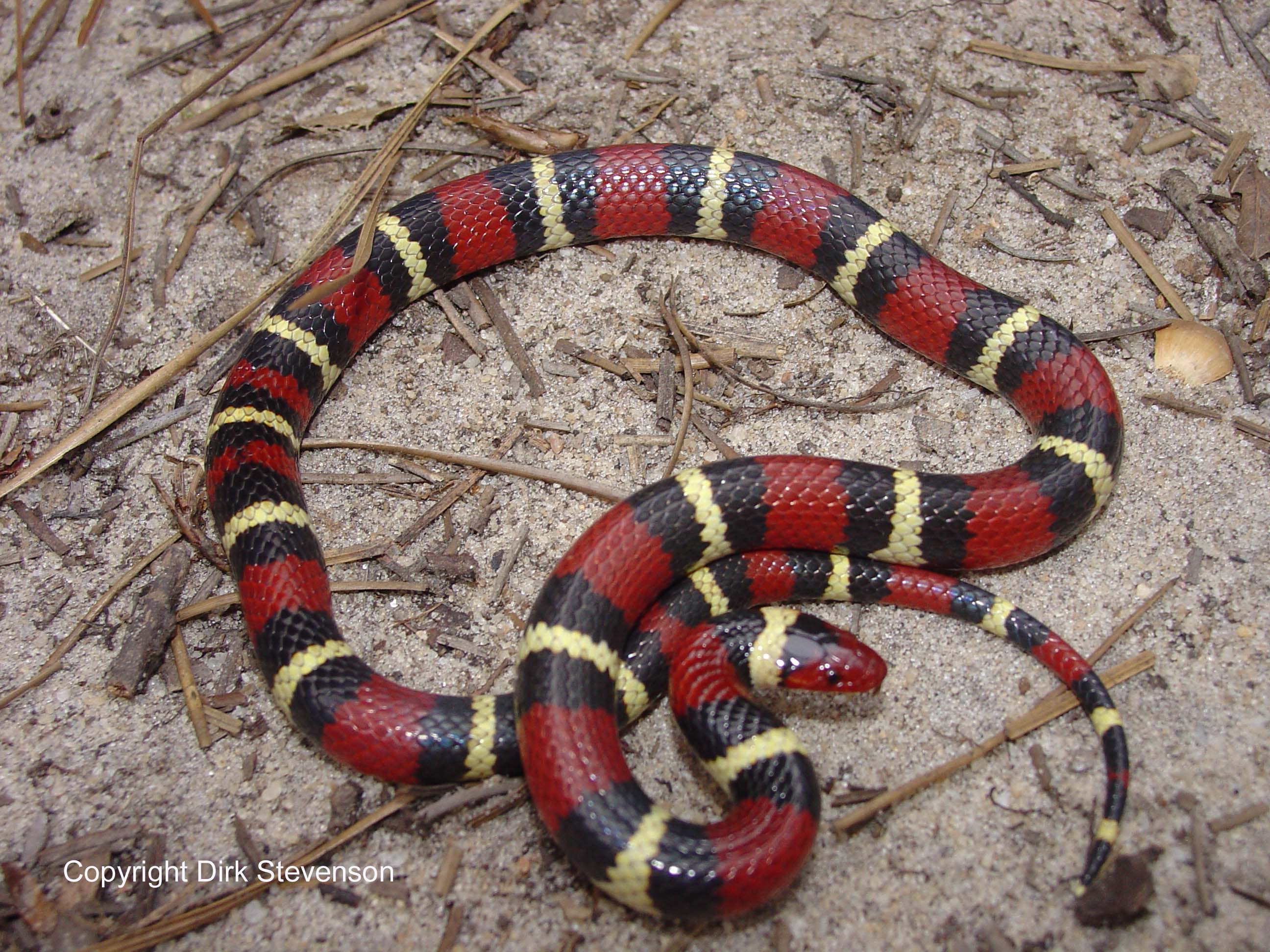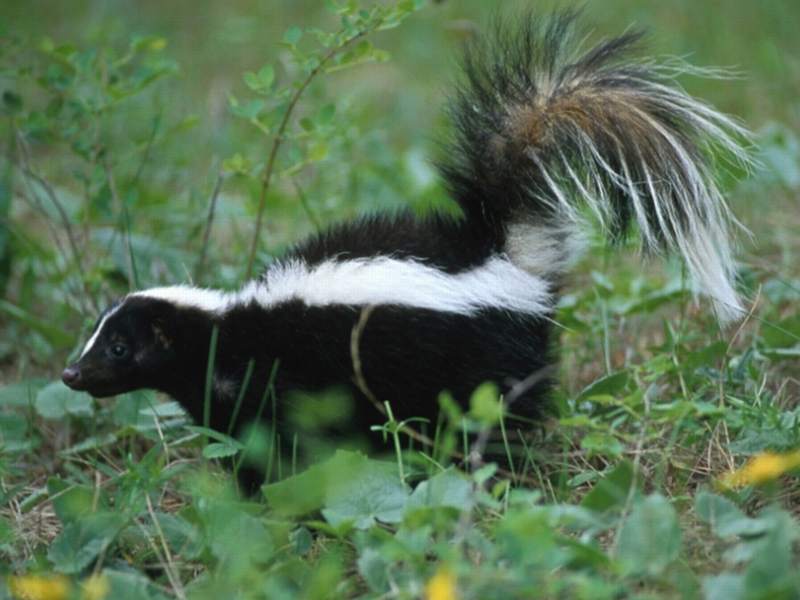



|
For instance, there is a poisonous snake called the Coral snake which has brilliant warning coloration. Its body is broadly striped in red, yellow and black. A second snake, the King snake, has a very similar coloration pattern — but it isn't poisonous. The nasty experiences predators have with coral snakes also protect the King snake. This "piggy back" strategy is mimicry. | 
|
 Page One: An Animal's Offense
Page One: An Animal's Offense Page Three: Animals and Their Coloration Warnings
Page Three: Animals and Their Coloration Warnings